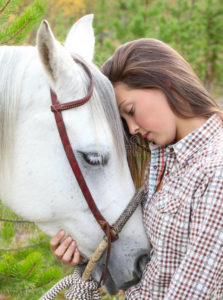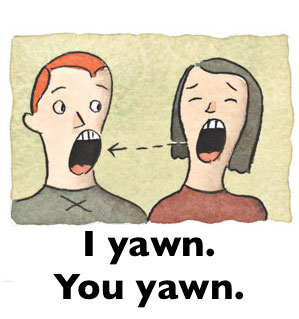
Connected brains? Not so fast!
Editor’s Note: Dr. Steve Peters, 2017 and 2018 presenter at the Best Horse Practices Summit, received an inquiry recently about mirror neurons. These neurons have been the object of study, confusion, and wild extrapolation in recent years. Here’s the question and reply:
Dear Dr. Peters,
In 2013, after reading Evidence-Based Horsemanship, I contacted you, to ask your opinion regarding mirror neurons in horses. At the time, your response was, in essence, ‘No.’
I am wondering if, in your work since then, there has been any change in your findings. I thank you in advance for your response,
Sherry
Dr. Peters responds:

Courtesy Livre d’or
Sherry, I do remember you and your question.
Ideas around mirror neurons are still controversial and not something we discuss much in day-to-day neuroscience. When these cells were first discovered, it created quite a stir. The scientists who discovered mirror cells in monkeys have greatly reduced their initial statements and now believe they have a much more restricted role.
Numerous neuroimaging (functional MRI) studies with humans have found that these cells are largely found in areas involved in planning and execution of movements. The studies showed higher activation in an area when an observed action was to be carried out later and it often involved a task with which the subject had familiarity.
It now seems that mirror neurons are mostly involved in selecting and controlling motor responses.

Mirror Neurons at work? Maybe. Maybe not.
But I must say, when the general public got hold of the research, it became a bit of a runaway train. People associated these neurons with empathy, a subjective feeling. Bear in mind, these are just neurons. And the brains of humans are different from the studied subjects, monkeys, and even more different from horses. We can be susceptible to anthropomorphizing or making inaccurate conjectures. In humans, imitation learning is going to involve higher level functioning.
As an aside: Some have called autism a result of broken mirror neurons but autism experts have universally rejected this theory. Even research on contagious yawning and its association with empathy – seemingly an ideal example of mirror neurons – is still weak and refutable. Read more here.
I am staying open minded and will continue to read the peer-reviewed research but despite their interesting proposed function they remain an interesting phenomenon that needs further research.
Best regards and keep your scientific curiosity leading you to follow these interesting findings.
Dr. Steve Peters
Steve,
I guess you’d disagree with the following statement from an article in Scientific American titled, “Do Dogs Have Mirror Neurons?”
“The presence of mirror neurons in other animals suggests that they may have an ancient evolutionary origin and play an important role in communication. So it seems entirely reasonable to hypothesize that dogs have mirror neurons, too. Dogs appear to imitate other dogs. And mirror neurons in dogs may support communication with humans; we will have to study dogs’ brains more closely to find out.”
I’m currently reading a book called Born for Love, Why Empathy is Essential and Endangered, by Maia Szalavitz and Bruce Perry, MD, PhD. The book provides an extensive discussion of the role of mirror neurons in the development of empathy. Dr. Perry will be interviewed on 60 Minutes this weekend about revolutionary approaches in treating childhood trauma.
The research paper you cite says in part, “[d]espite the rather inconsistent and indirect empirical evidence reviewed above, we are not advocating that researchers should discard the possibility of a direct connection between empathy and CY [contagious yawning].” The paper didn’t characterize existing research as “weak and refutable” and called for more research with better technology.
I think we’ll have to agree to disagree — and wait for further research.
Not sure how old the research you’re looking at is, but the conclusions you’re drawing are a bit reductionistic and not representative of current findings. As of 2020, regions well beyond the ventral premotor cortex (from the 1990’s studies) are implicated. Inferior parietal, somatosensory, dorsal premotor, supplementary motor and even cerebellar cortices have demonstrated mirror activation during observation and execution of actions. Independent groups have also demonstrated mirror neuron activation in the aIns and rCC related to the experience of emotions like disgust and pain. I’d be very surprised if these processes were not represented in horses, and would love to see research in the area.